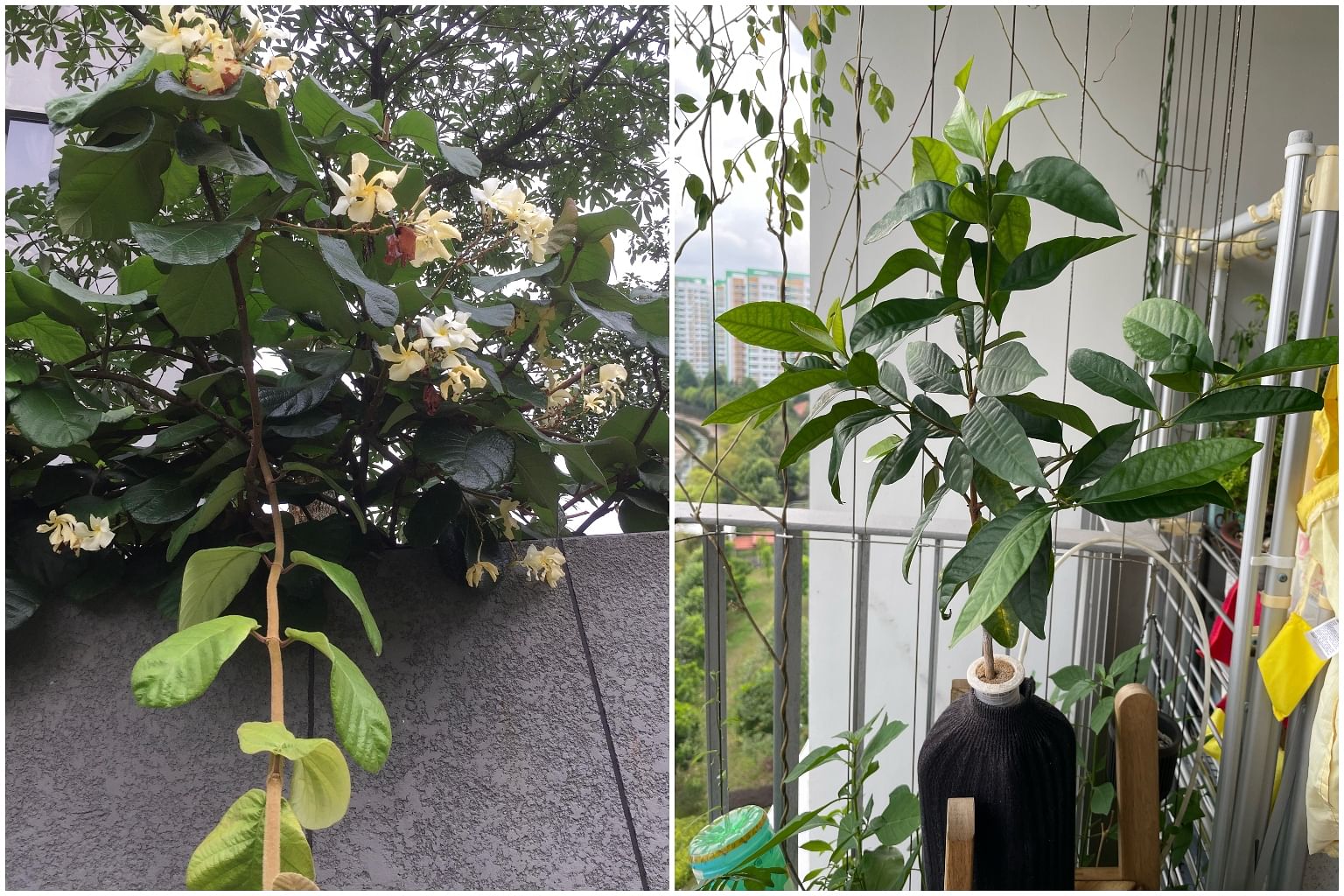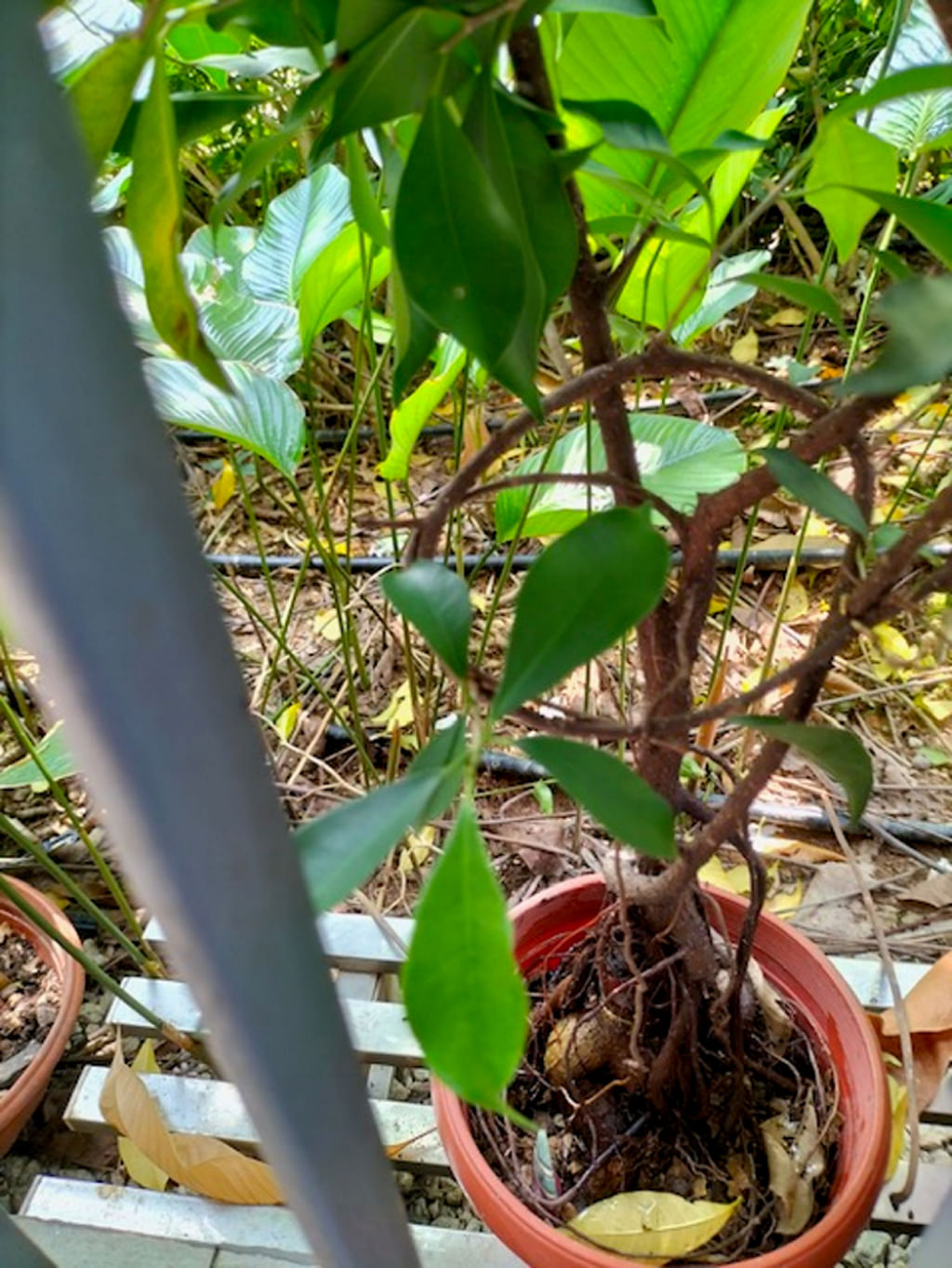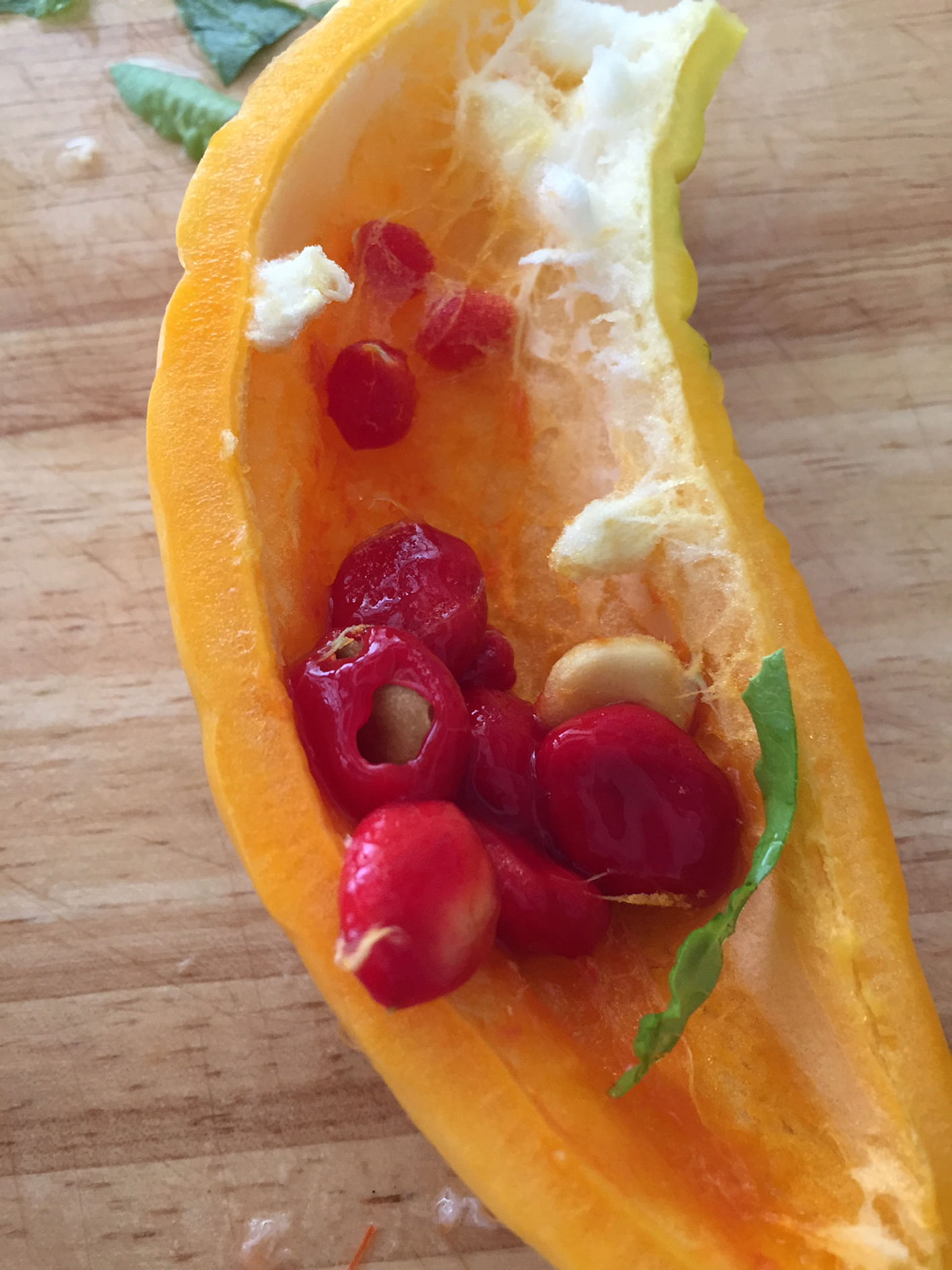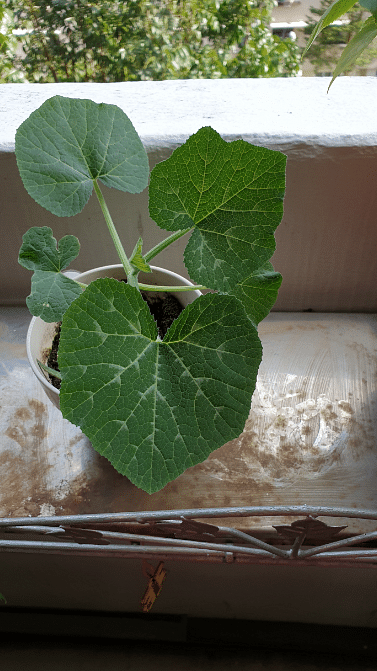Root Awakening: Frangipani vine is native to Singapore
Sign up now: Get ST's newsletters delivered to your inbox

Both the frangipani vine (left) and the salam tree are native to Singapore.
PHOTOS: THEN SUKE MIN, WONG BOON HONG
Follow topic:
Frangipani vine is native to Singapore
I saw this flowering plant peeking over the fence of a condominium in Upper Thomson Road. What is it?
Then Suke Min
The plant is botanically known as Chonemorpha fragrans. Its common names include frangipani vine or climbing frangipani. It is native to Singapore and is a vigorous climber that grows on large, strong trellises under direct sunlight. It produces scented yellow-white flowers.
Plant looks like the salam tree
What plant is this?
Wong Boon Hong
The sapling looks to be a salam tree, also known as the Indonesian bay leaf (Syzygium polyanthum). It is native to Singapore and can grow to heights of more than 25m.
Its leaves are used in Indonesian cuisine to flavour meat, curries, stews and rice dishes. The tree produces small fruit which are eaten by birds, so seedlings can be seen growing at the sites of bird droppings.
Ficus sapling needs to be repotted

I have had this plant for a few years. Should I repot it?
Wendy Neo
Your plant seems to be a Malayan Banyan (Ficus microcarpa) and, as its roots have filled the pot, it needs to be moved into a larger container. The roots are circling the pot, which can lead to a girdled root system - roots coiled in such a way that the flow of sap is restricted.
You can remove the plant from the pot and carefully unwind the roots to reduce the girdling. Alternatively, you can use a sharp knife and make vertical cuts around the root ball. The plant can then be moved into a larger pot.
This plant can grow into a huge tree and has an aggressive, fast-growing root system. Do not let the roots penetrate building structures, as they can cause damage.
Seeds can be obtained by removing red aril

Why is my bittergourd not growing? When I cut it open, I see red seeds. Can I replant them?
Thomas Lee
Did you plant seeds from a store-bought fruit? Fruit sold in the market may be of a hybrid origin so their seeds will not breed true - meaning that the resulting plants may not be the same as their parents and the size of the fruit will be different as well.
Smaller fruit can result from sub-optimal cultivation conditions, as well as incomplete pollination. Ensure you grow the plant with enough root space and sunlight, with regular watering and fertilisation. Hand pollination may be needed if there are no pollinators, like bees, in the area.
The bittergourd fruit's orange hue indicates that it is ripe. Its seeds will have a red aril around them, which can be removed. The seeds are mature and can be planted. Note that bittergourd seeds do not have a long lifespan and you will need fresh seeds for successful germination.
Plant is a pumpkin

I saw this plant growing in a pot. The stem looks hairy. What plant is it and how should I care for it?
Lin Meixiu
The plant appears to be a pumpkin plant, likely the Cucurbita moschata. It grows into a large vine under optimal conditions and will need a large root space to thrive.
You can grow it in the ground outdoors in a spot with well-drained soil and direct sunlight for at least six hours a day. The vine needs to be watered and fertilised regularly. Hand pollination may be needed to ensure fruit production.
As the pumpkin vine is a climber, you may need to build a trellis for itto grow on. This can also reduce potential damage by pests.
- Answers by Dr Wilson Wong, an NParks-certified practising horticulturist, parks manager and ISA-certified arborist. He is the founder of Green Culture Singapore and an adjunct assistant professor (Food Science & Technology) at the National University of Singapore.
- Have a gardening query? E-mail it with clear, high-resolution pictures of at least 1MB, if any, and your full name to stlife@sph.com.sg. We reserve the right to edit and reject questions.

